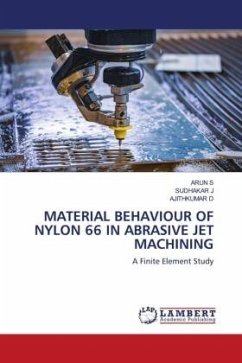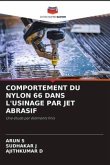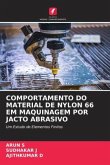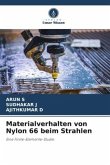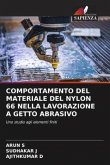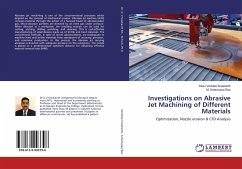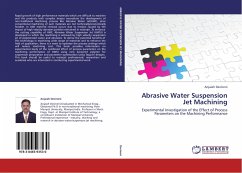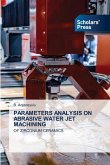The objective of the study is to develop a finite element model of abrasive jet impact on nylon 66 for different process parameters such as nozzle angle and abrasive velocity. The nature of the mechanisms involved in the domain of Abrasive Water Jet machining is still not well understood but is essential for Abrasive Water Jet control improvement. It is based on an Abrasive Water Jet process which in this case represents the impact of a particular abrasive grain .The combination of five nozzle angles 30º, 45º, 60º, 75º and 90º with three abrasive velocities 400m/s, 500m/s and 600m/s has been simulated using the tools LS-DYNA and Hypermesh for obtaining the results such as maximum shear stress, plastic strain, pressure, von mises stress and result velocity for effective material removal of nylon 66 such as less duration of material removal and maximum material removal rate. Totally fifteen simulation has been carried out with a mesh element as X mesh for nylon 66 and tetramesh forsilicon carbide which acts as abrasive particle. For the above said results and consolidated for the best solution.
Bitte wählen Sie Ihr Anliegen aus.
Rechnungen
Retourenschein anfordern
Bestellstatus
Storno

